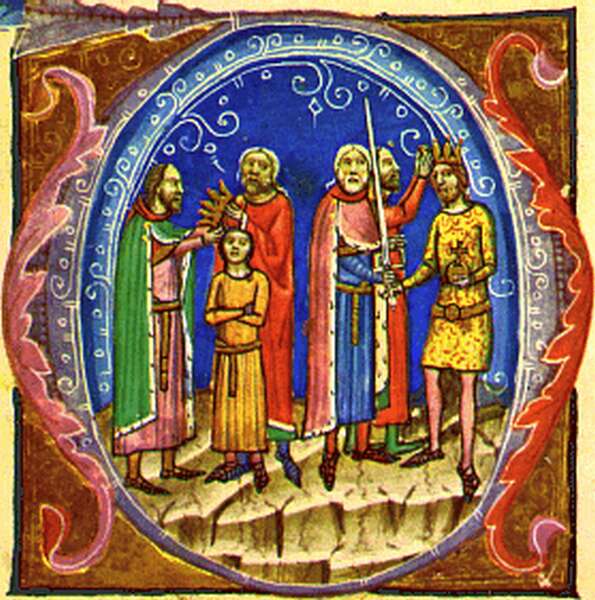|
Okland
Ocland ( hu, Oklánd, Hungarian pronunciation: ) is a commune in Harghita County, Romania. It lies in the Székely Land, an ethno-cultural region in eastern Transylvania. The commune is composed of three villages: *Crăciunel / Karácsonyfalva *Ocland / Oklánd *Satu Nou / Homoródújfalu History Ocland was first recorded in 1546 as ''Akland'', and in 1550 as ''Okland''.Transylvanian Toponym Book The name Karácsonyfalva was first recorded in 1333 in a tithe register when a priest of ''Karachni'' was mentioned. In 1453, reference was made of Peter, son of Michael, of ''Karachonfalwa''. Its Romanian name derives from the Hungarian and historically it was Crăciunfăleni. [...More Info...] [...Related Items...] OR: [Wikipedia] [Google] [Baidu] |
Harghita County
Harghita (, hu, Hargita megye, ) is a county (județ) in the center of Romania, in eastern Transylvania, with the county seat at Miercurea Ciuc. Demographics 2002 census In 2002, Harghita County had a population of 326,222 and a population density of 52/km2. * Hungarians – 84.62% (or 276,038) * Romanians – 14.06% (or 45,870) * Romani – 1.18% (or 3,835) * Others – 0.14% 2011 census In 2011, it had a population of 302,432 and a population density of 46/km2. * Hungarians – 85.21% (or 257,707) * Romanians – 12.96% (or 39,196) * Romani * Others – 1.76% (or 5,326). Harghita county has the highest percentage of Hungarians in Romania, just ahead of Covasna county. The Hungarians form the majority of the population in most of the county's municipalities, with Romanians concentrated in the northern and eastern part of the county (particularly Toplița and Bălan), as well as in the enclave of Voșlăbeni. The Székelys of Harghita are mostly Roman Catholic, ... [...More Info...] [...Related Items...] OR: [Wikipedia] [Google] [Baidu] |
Ladislaus I Of Hungary
Ladislaus I ( hu, László, hr, Ladislav, sk, Ladislav, pl, Władysław; 1040 – 29 July 1095), also known as Saint Ladislas, was King of Hungary from 1077 and King of Croatia from 1091. He was the second son of King Béla I of Hungary and Richeza (or Adelaide) of Poland. After Béla's death in 1063, Ladislaus and his elder brother, Géza, acknowledged their cousin Solomon as the lawful king in exchange for receiving their father's former duchy, which included one-third of the kingdom. They cooperated with Solomon for the next decade. Ladislaus's most popular legend, which narrates his fight with a "Cuman" (a Turkic nomad marauder) who abducted a Hungarian girl, is connected to this period. The brothers' relationship with Solomon deteriorated in the early 1070s, and they rebelled against him. Géza was proclaimed king in 1074, but Solomon maintained control of the western regions of his kingdom. During Géza's reign, Ladislaus was his brother's most influential adviser. G ... [...More Info...] [...Related Items...] OR: [Wikipedia] [Google] [Baidu] |
Communes In Harghita County
An intentional community is a voluntary residential community which is designed to have a high degree of social cohesion and teamwork from the start. The members of an intentional community typically hold a common social, political, religious, or spiritual vision, and typically share responsibilities and property. This way of life is sometimes characterized as an " alternative lifestyle". Intentional communities can be seen as social experiments or communal experiments. The multitude of intentional communities includes collective households, cohousing communities, coliving, ecovillages, monasteries, survivalist retreats, kibbutzim, hutterites, ashrams, and housing cooperatives. History Ashrams are likely the earliest intentional communities founded around 1500 BCE, while Buddhist monasteries appeared around 500 BCE. Pythagoras founded an intellectual vegetarian commune in about 525 BCE in southern Italy. Hundreds of modern intentional communities were formed across ... [...More Info...] [...Related Items...] OR: [Wikipedia] [Google] [Baidu] |
Cserépfalu
Cserépfalu is a village in Borsod-Abaúj-Zemplén county, Hungary Hungary ( hu, Magyarország ) is a landlocked country in Central Europe. Spanning of the Pannonian Basin, Carpathian Basin, it is bordered by Slovakia to the north, Ukraine to the northeast, Romania to the east and southeast, Serbia to the .... External links Street map Populated places in Borsod-Abaúj-Zemplén County {{Borsod-geo-stub ... [...More Info...] [...Related Items...] OR: [Wikipedia] [Google] [Baidu] |
Hungary
Hungary ( hu, Magyarország ) is a landlocked country in Central Europe. Spanning of the Carpathian Basin, it is bordered by Slovakia to the north, Ukraine to the northeast, Romania to the east and southeast, Serbia to the south, Croatia and Slovenia to the southwest, and Austria to the west. Hungary has a population of nearly 9 million, mostly ethnic Hungarians and a significant Romani minority. Hungarian, the official language, is the world's most widely spoken Uralic language and among the few non-Indo-European languages widely spoken in Europe. Budapest is the country's capital and largest city; other major urban areas include Debrecen, Szeged, Miskolc, Pécs, and Győr. The territory of present-day Hungary has for centuries been a crossroads for various peoples, including Celts, Romans, Germanic tribes, Huns, West Slavs and the Avars. The foundation of the Hungarian state was established in the late 9th century AD with the conquest of the Carpathian Basin by Hungar ... [...More Info...] [...Related Items...] OR: [Wikipedia] [Google] [Baidu] |
Csanádalberti
Csanádalberti is a village in Csongrád County, in the Southern Great Plain region of southern Hungary. Geography It covers an area of and has a population Population typically refers to the number of people in a single area, whether it be a city or town, region, country, continent, or the world. Governments typically quantify the size of the resident population within their jurisdiction using a ... of 439 people (2013 estimate). Population References Populated places in Csongrád-Csanád County {{Csongrad-geo-stub ... [...More Info...] [...Related Items...] OR: [Wikipedia] [Google] [Baidu] |
Roman Catholic
Roman or Romans most often refers to: *Rome, the capital city of Italy *Ancient Rome, Roman civilization from 8th century BC to 5th century AD *Roman people, the people of ancient Rome *'' Epistle to the Romans'', shortened to ''Romans'', a letter in the New Testament of the Christian Bible Roman or Romans may also refer to: Arts and entertainment Music * Romans (band), a Japanese pop group * ''Roman'' (album), by Sound Horizon, 2006 * ''Roman'' (EP), by Teen Top, 2011 *" Roman (My Dear Boy)", a 2004 single by Morning Musume Film and television * Film Roman, an American animation studio * ''Roman'' (film), a 2006 American suspense-horror film * ''Romans'' (2013 film), an Indian Malayalam comedy film * ''Romans'' (2017 film), a British drama film * ''The Romans'' (''Doctor Who''), a serial in British TV series People *Roman (given name), a given name, including a list of people and fictional characters *Roman (surname), including a list of people named Roman or Romans *Ῥωμ� ... [...More Info...] [...Related Items...] OR: [Wikipedia] [Google] [Baidu] |
Elisabeth Of Bavaria
Duchess Elisabeth Amalie Eugenie in Bavaria (24 December 1837 – 10 September 1898) was Empress of Austria and Queen of Hungary from her marriage to Emperor Franz Joseph I on 24 April 1854 until her assassination in 1898. Elisabeth was born into the royal Bavarian House of Wittelsbach. Nicknamed Sisi (also Sissi), she enjoyed an informal upbringing before marrying Emperor Franz Joseph I at the age of sixteen. The marriage thrust her into the much more formal Habsburg court life, for which she was unprepared and which she found uncongenial. Early in the marriage, she was at odds with her mother-in-law, Archduchess Sophie, who took over the rearing of Elisabeth's daughters, one of whom, Sophie, died in infancy. The birth of a son to the imperial couple, Crown Prince Rudolf, improved Elisabeth's standing at court, but her health suffered under the strain. As a result, she would often visit Hungary for its more relaxed environment. She came to develop a deep kinship w ... [...More Info...] [...Related Items...] OR: [Wikipedia] [Google] [Baidu] |
Hungarian Language
Hungarian () is an Uralic language spoken in Hungary and parts of several neighbouring countries. It is the official language of Hungary and one of the 24 official languages of the European Union. Outside Hungary, it is also spoken by Hungarian communities in southern Slovakia, western Ukraine ( Subcarpathia), central and western Romania (Transylvania), northern Serbia (Vojvodina), northern Croatia, northeastern Slovenia (Prekmurje), and eastern Austria. It is also spoken by Hungarian diaspora communities worldwide, especially in North America (particularly the United States and Canada) and Israel. With 17 million speakers, it is the Uralic family's largest member by number of speakers. Classification Hungarian is a member of the Uralic language family. Linguistic connections between Hungarian and other Uralic languages were noticed in the 1670s, and the family itself (then called Finno-Ugric) was established in 1717. Hungarian has traditionally been assigned to the Ugric alo ... [...More Info...] [...Related Items...] OR: [Wikipedia] [Google] [Baidu] |
Old Hungarian Script
The Old Hungarian script or Hungarian runes ( hu, Székely-magyar rovás, 'székely-magyar runiform', or ) is an alphabetic writing system used for writing the Hungarian language. Modern Hungarian is written using the Latin-based Hungarian alphabet. The term "old" refers to the historical priority of the script compared with the Latin-based one. The Old Hungarian script is a child system of the Old Turkic alphabet. The Hungarians settled the Carpathian Basin in 895. After the establishment of the Christian Hungarian kingdom, the old writing system was partly forced out of use during the rule of King Stephen, and the Latin alphabet was adopted. However, among some professions (e.g. shepherds who used a "rovás-stick" to officially track the number of animals) and in Transylvania, the script has remained in use by the Székely Magyars, giving its Hungarian name . The writing could also be found in churches, such as that in the commune of Atid. Its English name in the ISO 159 ... [...More Info...] [...Related Items...] OR: [Wikipedia] [Google] [Baidu] |
Agnus Dei
is the Latin name under which the " Lamb of God" is honoured within the Catholic Mass and other Christian liturgies descending from the Latin liturgical tradition. It is the name given to a specific prayer that occurs in these liturgies, and is the name given to the music pieces that accompany the text of this prayer. The use of the title "Lamb of God" in liturgy is based on , in which St. John the Baptist, upon seeing Jesus, proclaims "Behold, the Lamb of God, who takes away the sin of the world!" Liturgical usage Latin Catholic The Syrian custom of a chant addressed to the Lamb of God was introduced into the Roman Rite Mass by Pope Sergius I (687–701) in the context of his rejection of the Council of Trullo of 692 (which was well received in the Byzantine East), whose canons had forbidden the iconographic depiction of Christ as a lamb instead of a man. The verse used in the first and second invocations may be repeated as many times as necessary whilst the celebr ... [...More Info...] [...Related Items...] OR: [Wikipedia] [Google] [Baidu] |






